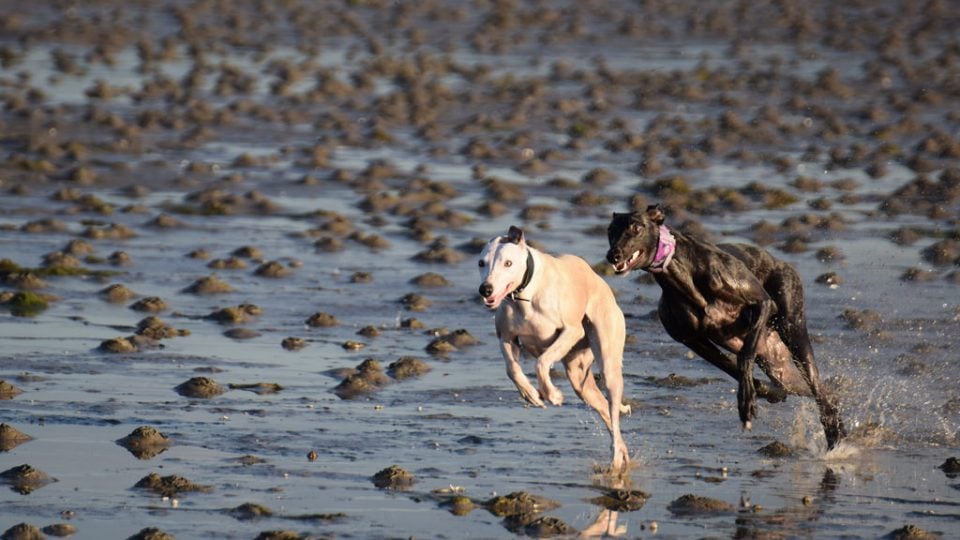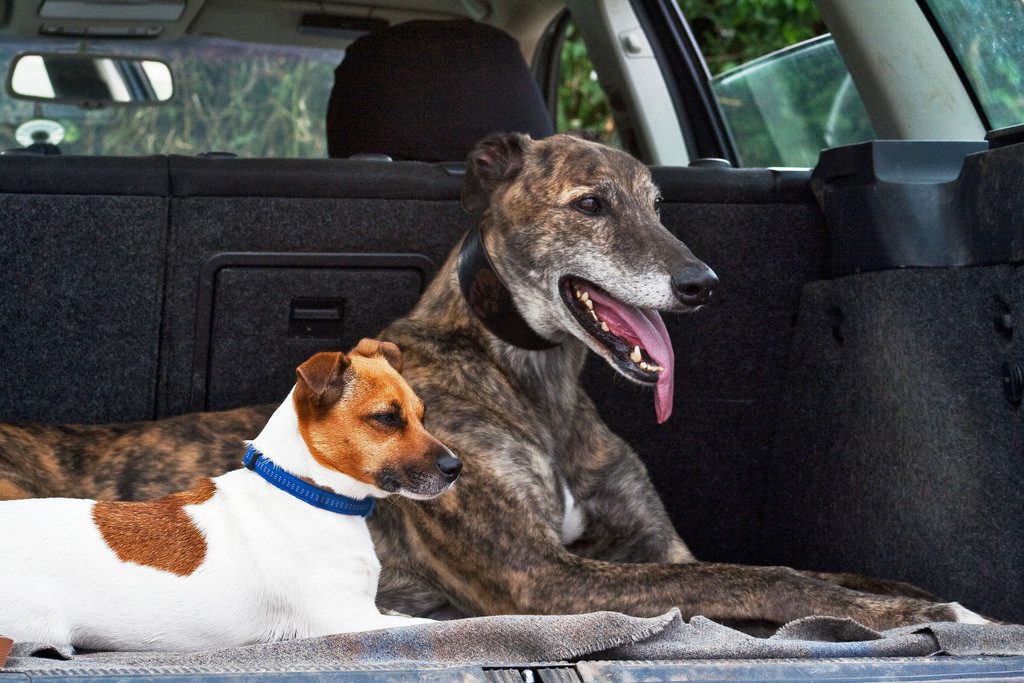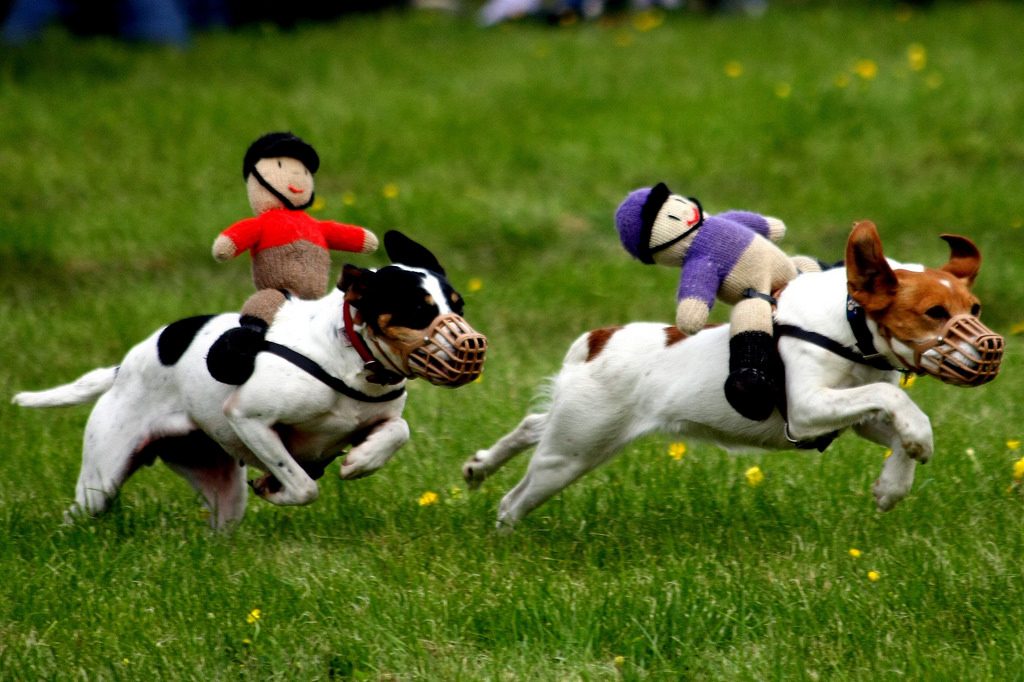The 2016 Summer Olympics have been full of speed-running milestones: Elaine Thompson became the first woman since FloJo to win 100m and 200m golds in the same Olympics; Wayde van Niekerk broke the world record in the men’s 400-meter dash; and of course, sprinter Usain Bolt maintained his title as the fastest man in the world with a third-consecutive gold medal in the men’s 100-meter dash. These amazing athletes are at the top of their game…but even they couldn’t beat the world’s fastest dogs in a foot race!
According to dog expert Stanley Coren, “When Usain Bolt set his 100 meter world record he was running at a speed of 22.9 mph and covered that distance in 9.58 seconds. A greyhound would complete that same race in 5.33 seconds.”
From quick-sprinting hounds to the endurance-racing husky, we’ve got the scoop on Olympian-caliber canines, and what makes them so fast.
A greyhound could beat Usain Bolt’s 100 meter world record in 5.33 seconds.
High speed dog breeds
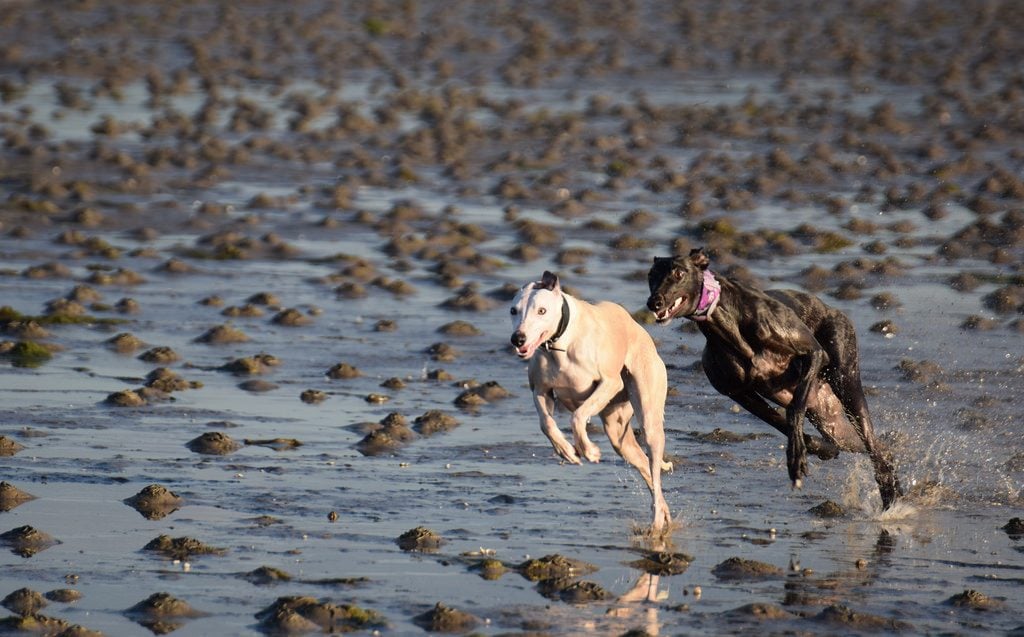
Depending on your fitness level, there’s a good chance your dog can outpace you in a dash. The average human can sprint (that is, run at full speed over a short distance) at 15.9 miles per hour, while the average dog sprints closer to 19 miles per hour (source).
And then there are the extra-fast dogs that give Olympic medalists a run for their money. Here are a few of the fastest dog breeds in the world (and their average top speeds):
- Greyhound (43mph)
- Saluki (43mph)
- Vizsla (40mph)
- Afghan hound (40mph)
-
Jack Russell terrier (38mph)
- Scottish deerhound (38mph)
- Borzoi (38mph)
- Dalmatian (37mph)
- Russian wolfhound(36 mph)
-
Whippet (35mph)
- Doberman pinscher (32mph)
- Border collie (30mph)
- Siberian husky / Alaskan husky (30mph)
- German shepherd dog / Belgian malinois (28mph)
You may have noticed that border collies, huskies and German shepherd dogs are significantly “slower” than the other breeds mentioned. That’s because they’re endurance runners, built to sustain running over longer distances rather than short bursts of speed. These endurance dogs excel as police dogs, sled dogs, and herding dogs.
Dog bodies are built for speed
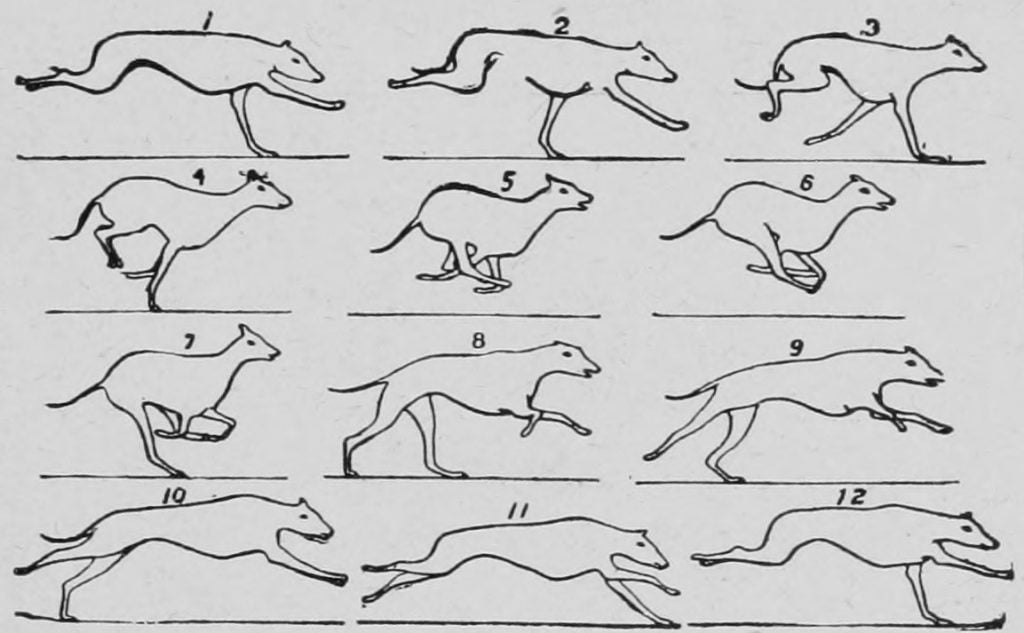
19th century dog galloping illustration via wikicommons
All dogs share distinct canine qualities that make them excellent runners:
- A higher metabolism than people (meaning they breathe faster and pump blood faster, which makes it possible for them to run faster)
- Feet that can grip and feel the ground, giving dogs great turning ability and complex gaits (source)
- A double-suspension gallop that maximizes speed and distance when running at top speed. In the elongated phase, the spine and body are stretched out parallel to the ground with both pairs of legs extended. In the compression phase, the spine and body compress so front and hind legs overlap beneath the animal, getting ready to hit the ground and push forward.
- A flexible spine, long loin, and strong abdominal muscles that allow running dogs to produce a great deal of power and forward drive.
Dogs have one other obvious leg-up on human runners…actually, two legs up. Those four limbs, along with long bodies and high metabolisms, make dogs incredibly powerful runners.
Different breeds are fast for different reasons
Beyond the run-ready traits all dogs share, the fastest breeds in the world have a few differences that make them especially speedy.
Consider the fastest dog in the world: the greyhound. One look at their thick, muscular haunches tells you they’re powerful, but it’s not just their legs that make them fast. Greyhounds also have aerodynamic heads, narrow hips, and long legs that help them cover a long distance in a short amount of time.
Greyhounds have aerodynamic heads, narrow hips, and long legs that help them cover a long distance in a short amount of time.
Sprinters like greyhounds, whippets, and even the smaller Jack Russell terrier also have comparatively large hearts that pump blood quickly through their bodies when they run at full speed, and much higher blood volume compared to body size than human athletes (source). These dogs’ bodies process oxygen incredibly fast, and their powerful hearts can keep up with their stride.
Long-distance champs like huskies, on the other hand, are built to maintain a steady speed over a longer amount of time. Their stocky bodies and wide, thickly-padded paws help them run for long distances over snow. While their sprint maxes out around 30mph, they can maintain speeds of 10 to 12 miles per hour for up to six hours at a time, making them better marathoners than most human beings!
Run your dog for fun, not profit
There is a darker side to the world’s fastest dog breeds: many of them were bred by humans to be moneymakers on the race track. The multi-million dollar dog racing industry treats dogs as property and tools of the trade, often housing them in neglectful, inhumane conditions. From greyhounds being injured on the track to sled dogs dying during the Iditarod, competitive dog racing is a dangerous place for animals who can’t speak up for themselves.
Responsible dog parents can celebrate and encourage their pets’ athleticism in a safe and positive way. Recreational dog sports like flyball, lure coursing, agility, and “fun runs” are a great way to bond with your speed-demon dog and nurture their abilities in an environment that’s safe and enjoyable for all. Just remember (as if you need to be reminded!) to treat your dog well, ensure they’re healthy, hydrated, and well-fed, and stop if they aren’t having fun.
Want a speed demon of your very own? Consider adopting a retired greyhound. Known as the “45mph couch potato,” these elegant dogs make wonderful companions whether you live in a tiny apartment or huge house. They may not have the chance to take down an Olympian on the global track, but they’re sure to win a gold medal in your heart.
